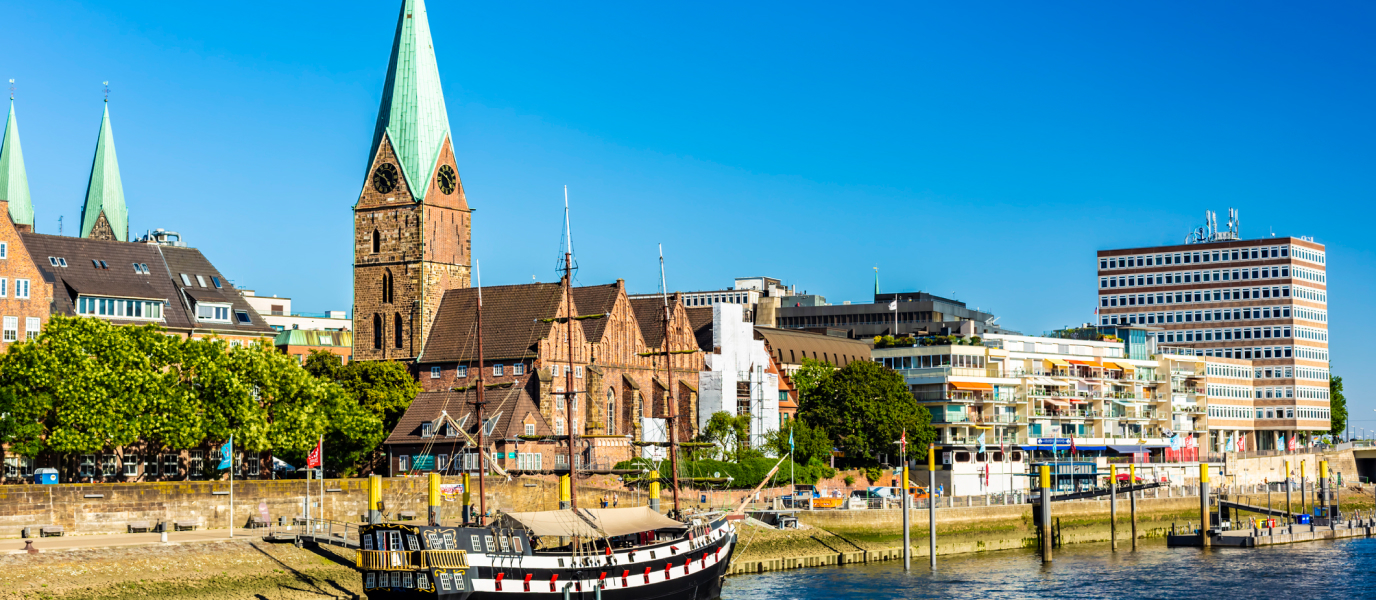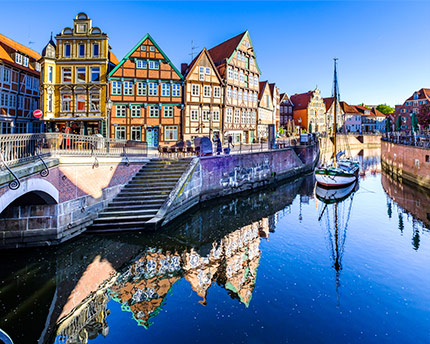Lüneburg is one of Germany’s prettiest cities. Its Hanseatic heritage survived the Second World War, as it was one of the few German cities to escape the bombings to arrive at the present day in all its beauty. If you are on a trip to Hamburg or northern Germany, you really should visit Lüneburg.
In this article, we are going to look at the main monuments and points of interest in this city with its impressive history, its great beauty, and its perfect state of preservation.
Like other cities in the north Germany, Poland and other northern European countries, Lüneburg belonged to the Hanseatic League, the powerful trading alliance of Baltic cities that became a major economic force in the Middle Ages. Lüneburg’s main trading commodity was salt, which it exported to other cities in the League.
The wealth and prosperity of these cities is still evident in their architecture, their great houses, mansions, palaces and castles, and in the infrastructure of their ports, built chiefly of red brick. If we add to this the fact that Lüneburg escaped the destruction of the Second World War (something rare in Germany), we are faced with a true gem of a city to visit on a day’s excursion from Hamburg.
So… get your notebook ready, and we’re on our way!
The Historic Quarter
A short walk from the railway station brings us conveniently to Lüneburg’s historic quarter, the true heart of the city. As we walk towards the centre after crossing the river Ilmenau, we are immediately aware of the Hanseatic aesthetic.
Lüneburg’s historic centre is not particularly extensive, so it can be comfortably toured in a couple of hours. As we have already said, this city has been spared damage from wars and fires throughout its history, so that almost all the houses are original.
The layer of salt on which the city stands has sunk over the years, so the cellars of many of the houses can no longer be used.
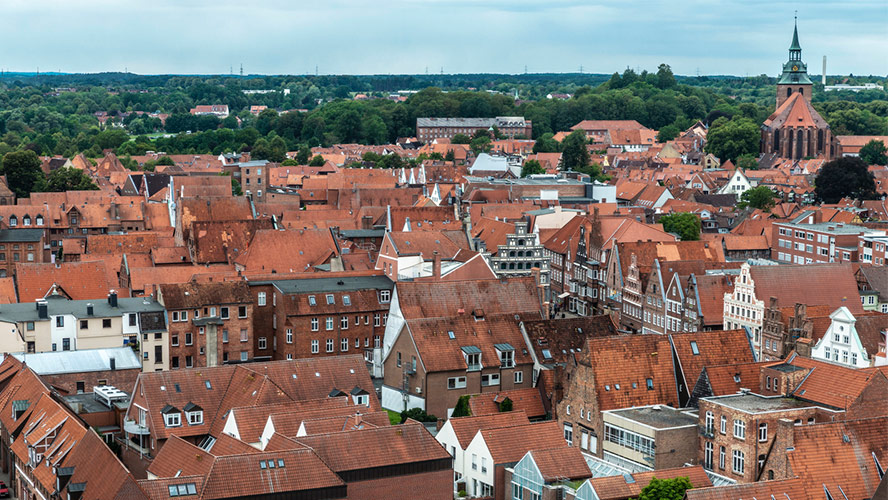
As it flows past the edge of the historic quarter, the river Ilmenau presents one of the city’s most attractive scenes. This was the site of the port from which salt and other goods were sent to the north along the river Elbe. You can find out more about this ‘white gold’ in the German Salt Museum, on the outskirts of Lüneburg.
The port’s hoist (a replica of the one built in 1797) that stands on the bank in a lovely, harmonious setting is a reminder of those bustling trading times. Without question, this is one of the city’s most delightful spots.
Stintmarkt
Opposite the hoist lies the Stintmarkt, the market and warehouses of the former port, where salt and fish were loaded onto boats. This is the historic heart of Lüneburg, the source of all its prestige and prosperity for several centuries.
Nowadays, the Stintmarkt is one of the liveliest areas of the city, due to the presence of numerous bars and restaurants. These charming streets make this the perfect place to spend an evening in spring or summer.
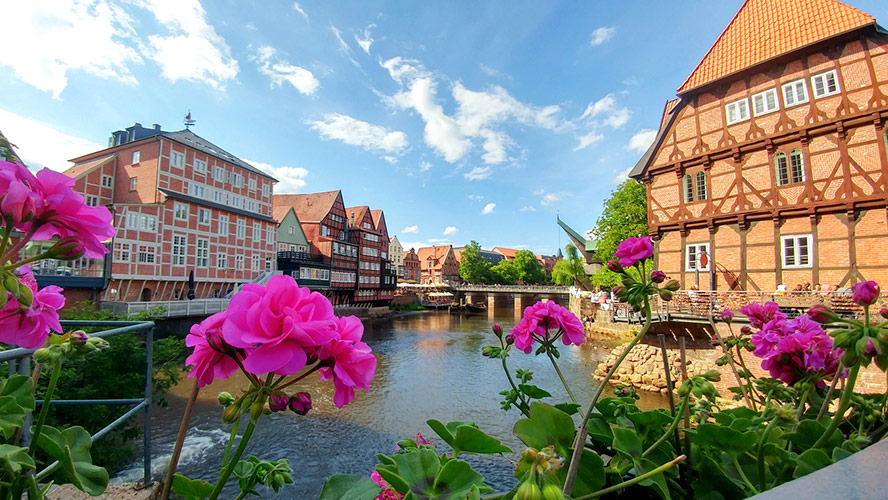
Lüneburg’s Town Hall
Another of Lüneburg’s highlights is its Town Hall in Am Markt (the market square), one of the city’s biggest squares. The splendid Town Hall is one of Germany’s most outstanding; it is a mixture of architectural styles, as it was built over a long period — 700 years.
Inside, the Town Hall is extraordinarily beautiful. It has 259 rooms, including some halls and chambers fit for a royal palace. Gothic and Baroque styles intermingle in paintings, wooden furniture and fittings, and stained-glass windows, lending this municipal edifice the air of a museum.
Although it still acts as the seat of government for the city, Lüneburg’s Town Hall is open to the public.
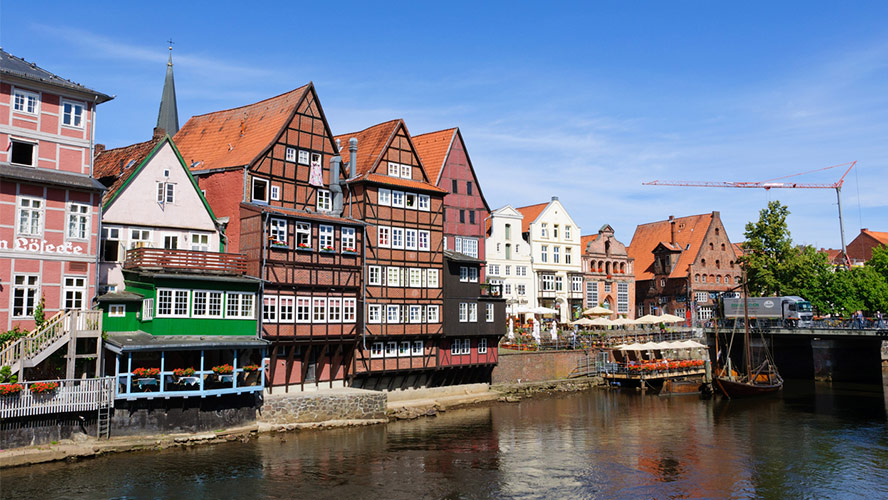
The churches of St. John and St. Michael
Two other impressive historical monuments in Lüneburg are the churches of St. John and St. Michael, built in the unmistakeable red brick.
The outstanding feature of St. John’s church is the height of its tower, at 108 metres, and its tilted angle. It stands in the lovely Am Sande square, the city’s oldest square. The church’s nave soars to an impressive height of around 22 metres. Up above is the remarkable, 4,500-pipe organ.
The origins of St. Michael’s church date back to a fourteenth-century, former Benedictine monastery. As you step into this church, where the musician Johann Sebastian Bach was once a student, you will be struck by the simple austerity of the brick interior.
Where to eat in Lüneburg
Lüneburg is the city with the second-largest number of bars per inhabitant, after Madrid. The number of establishments, including bars, pubs and restaurants, totals over 300, in a city of 75,000 inhabitants. And much of the appeal lies in its atmosphere.
With such a vast range of hostelries as this, it is hard to make a choice, but here are a few recommendations:
● Altes Brauhaus: an alehouse has stood on this spot since 1505, and you can enjoy regional meat or fish dishes as well as the house beer.
● Krone Bier: this spacious restaurant serves German cuisine and beer — the perfect place to discover the gastronomy of the local area.
● Elrado-House: one of Lüneburg’s finest restaurants, serving excellent meat dishes.
Where to stay near Lüneburg
Lüneburg’s proximity to Hamburg means that you can visit this small city on a day trip, without needing to spend the night here. Hamburg therefore could be kept as our operations centre for a tour of this part of Germany.
Ideal accommodation for this trip can be found at the Barceló Hamburg, a four-star hotel built in a modern style with a Spanish flavour, located just a few steps from Hamburg railway station.






























































